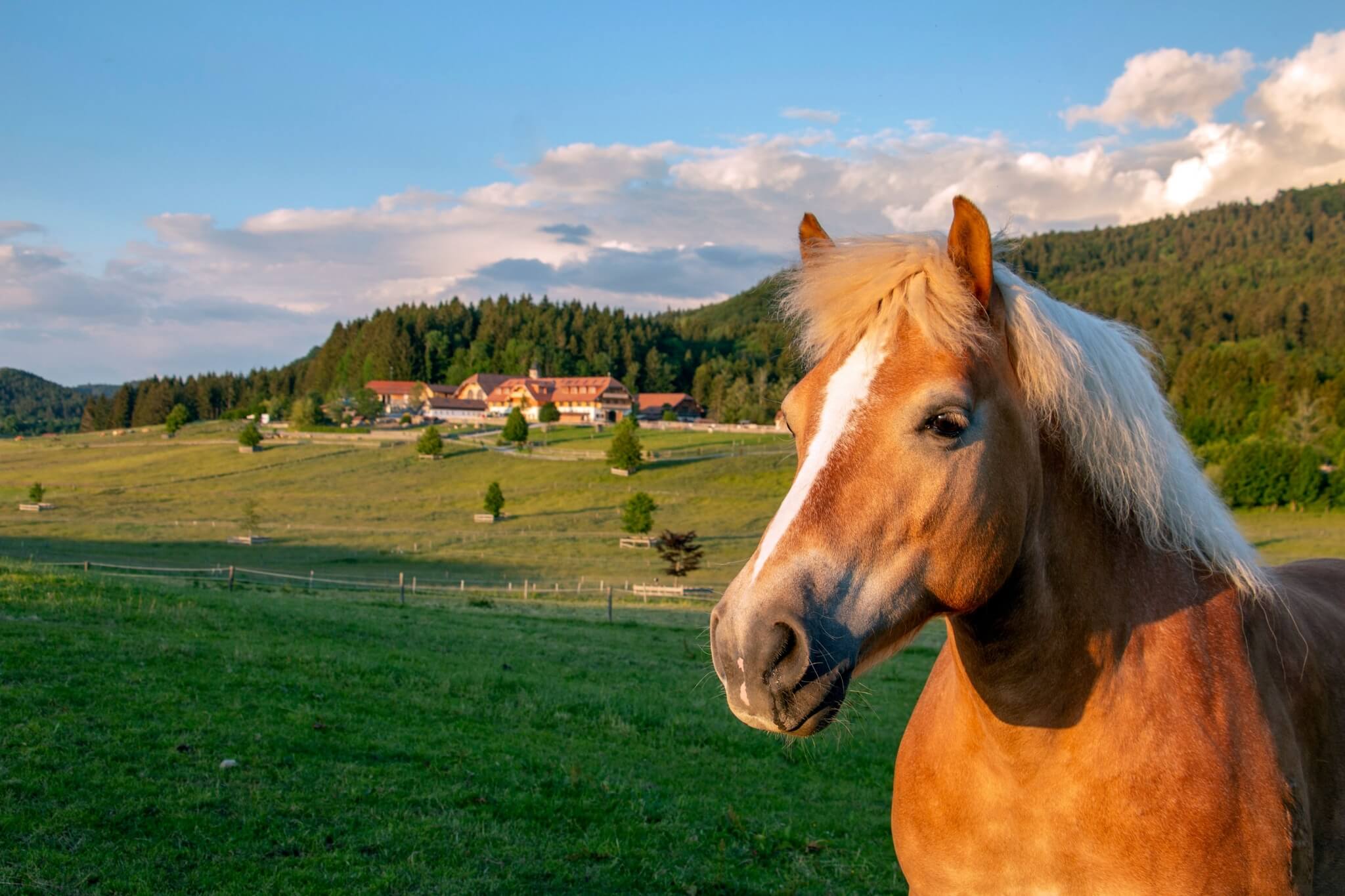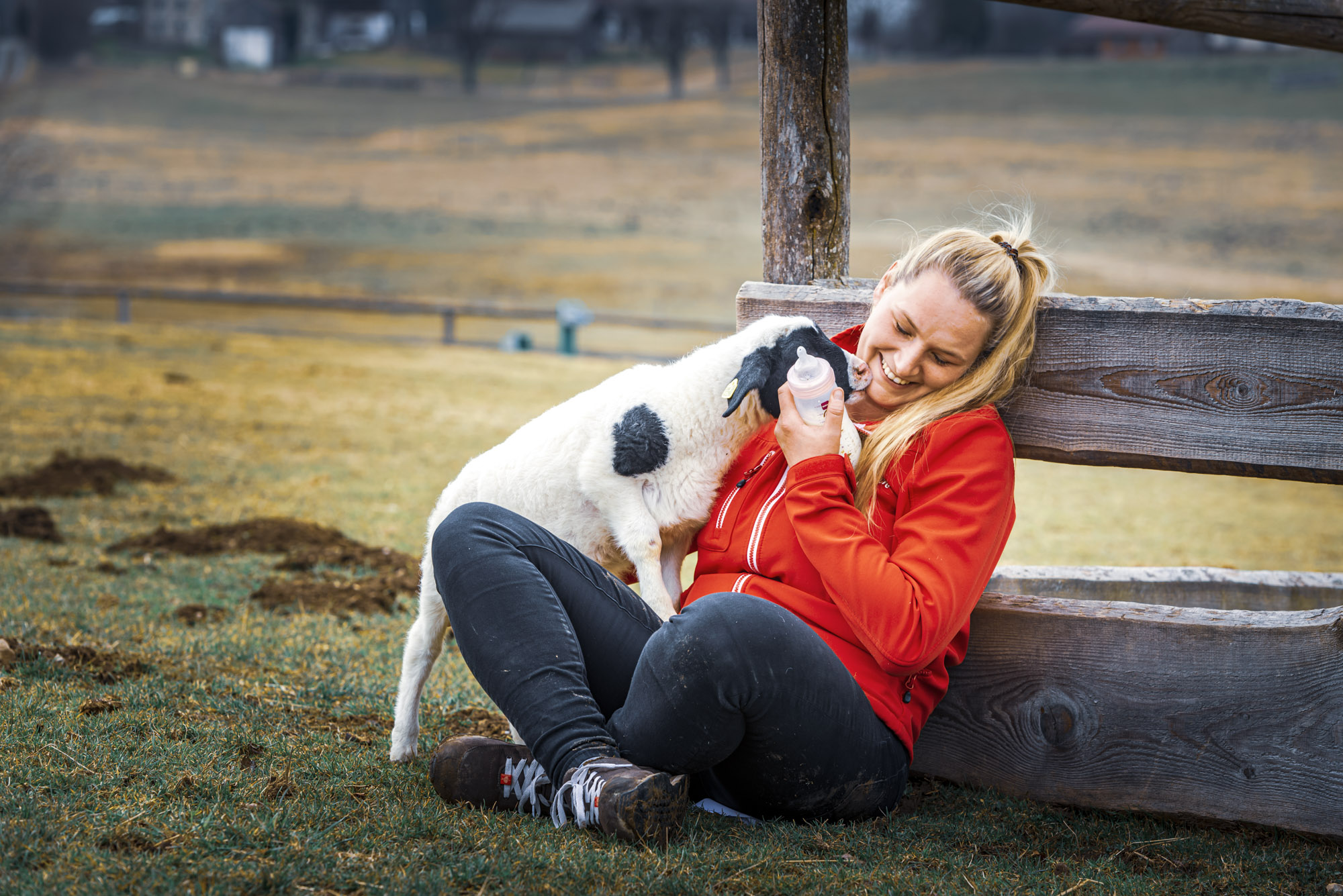
Our commitment
for native wild animals
Project: Our commitment to native wildlife
More and more native wild animals are in distress. There are many reasons for this, most of which are man-made.
Over the years, many wild animals have moved into Gut Aiderbichl. The story behind each animal is very individual. Some wild animals have come to us as babies and have found a home for life at Gut Aiderbichl. Others are only temporary guests and can be released back into the wild. We pay particular attention to our squirrels. You can find an overview of all the animals that live at Gut Aiderbichl here.
Support the wild animals with your donation!
Our project at a glance
Our commitment to native wildlife
Initial situation:
Due to various forms of environmental damage, more and more wild animals are in distress. There are many reasons for this:
- Forest clearance, monocultures, building development or intensive agricultural use are harming the native species population
- Increasing car traffic poses a daily threat to wildlife.
- Pollution of the environment by chemical residues from production and use in agriculture and forestry also jeopardises plants and animals.
Objective:
The aim of Gut Aiderbichl is to take in animals in need and nurse them back to health. In some cases, it is possible to release the animals back into the wild. At the same time, we want to draw attention to the precarious situation of wild animals.
Our work:
Gut Aiderbichl is home to a wide variety of wild animal species. Many have been lovingly bottle-fed by our employees.
We release squirrels that come to Gut Aiderbichl back into the wild. The squirrel reintroduction centre at Gut Aiderbichl Henndorf was founded in 2021 together with Carmen Haslinger from “Eichhörnchenhilfe Salzburg”. To protect the animals, Gut Aiderbichl works closely with “Eichhörnchenhilfe Salzburg” in Austria and Sabine Gallenberger from “Wildtierwaisen-Schutz e.V.” in Germany.
Outlook:
We want to sensitise the public to the situation of wild animals.
We want to pass on our knowledge about forest animals through the Gut Aiderbichl Academy. Among other things, Sabine Gallenberger from “Wildtierwaisen-Schutz e.V.” offers online seminars that can be booked via Gut Aiderbichl. Here you can access the seminars.
The habitat of wild animals is under threat!
Our project - the whole story
Squirrels:
The increasing loss of old deciduous and mixed forests is not only dramatic for the dormouse, but also for the squirrel. The trees are vital for the squirrels as a place to sleep and raise their young. In addition, the good climbers are comparatively well protected from predators on trees and branches. A healthy animal can jump back and forth between trees for around five metres – and can do what few other animals can: climb down a tree trunk head first. However, small squirrels often fall during their first attempts at climbing. Older animals often injure themselves when fleeing from predators such as pine martens or birds of prey.
The seeds, shoots and buds of trees serve as food for the small rodents. If the forest consists too much of monocultures, the squirrels’ choice of food decreases dramatically.
The construction of roads and residential areas also reduces the tree population. To make matters worse, the increase in traffic makes crossing roads life-threatening for squirrels. The resulting noise pollution also has a negative impact on the small rodents. This is why squirrels are increasingly asking us humans for help.
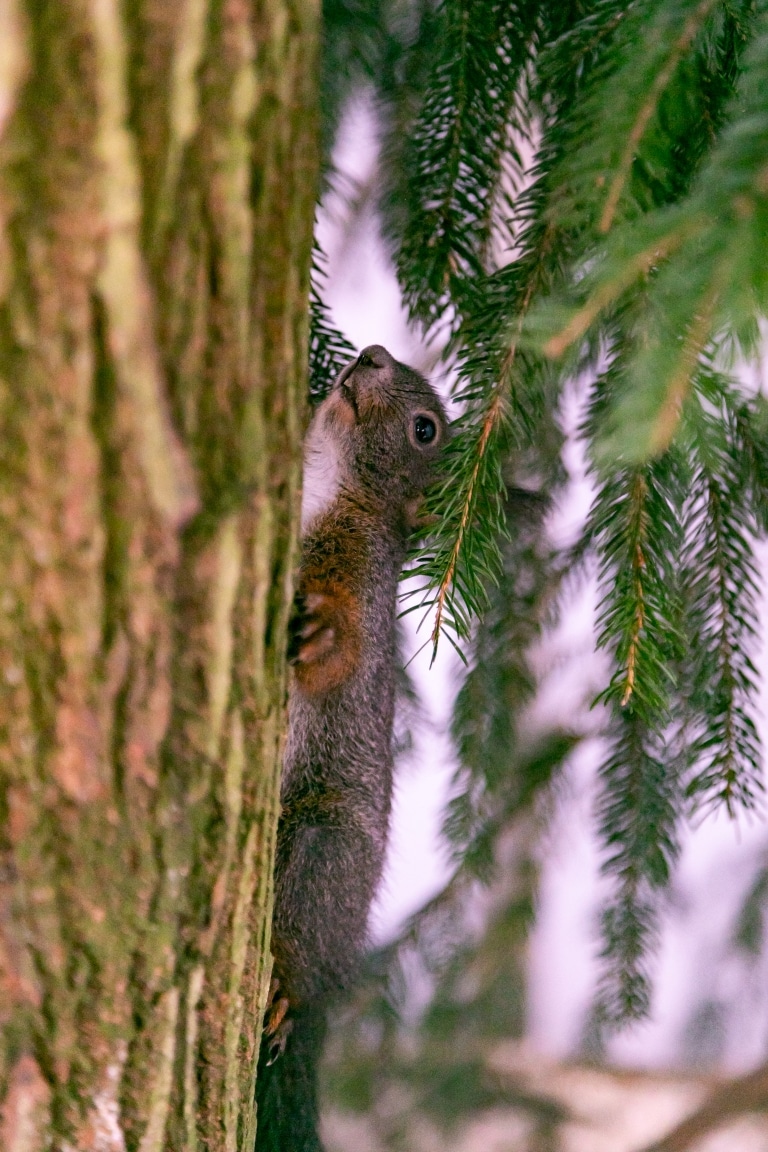
When squirrels ask for help
A squirrel always needs your help if it is easy to catch. Healthy squirrels are not so easy to catch. Squirrels lying on the ground in particular need help immediately. This also applies to squirrels that run after humans or try to climb up them. There is no need to be afraid here, as squirrels do not have rabies.
Carmen Haslinger from Austria and her German colleague, Sabine Gallenberger, have been looking after the small, needy rodents for many years and are on duty around the clock for the little animals. Injured animals and those in need of help come to them. The two experts offer first aid and nurse the small rodents and other forest animals back to health with a lot of love and passion.
Louis the squirrel (see picture) symbolises the many adult squirrels that Sabine Gallenberger and Carmen Haslinger look after at home. The little rodent was hit by a car on the road and came to Sabine Gallenberger with severe injuries. It was only thanks to the expert’s loving care that he survived the serious accident.
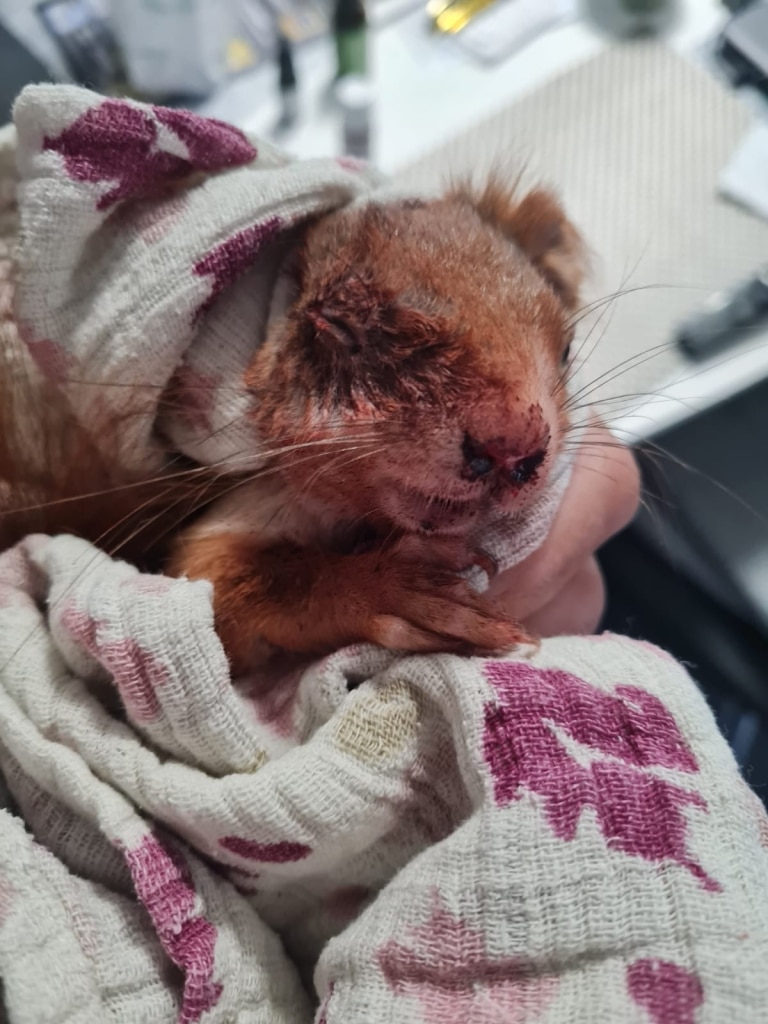
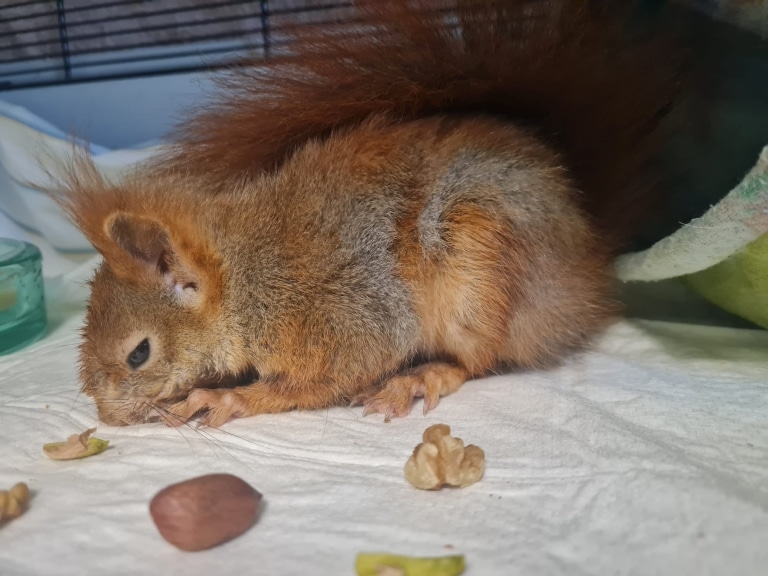
The Gut Aiderbichl squirrel reintroduction centre
Time and again, baby squirrels lose their mother or fall out of the nest and find shelter with Carmen Haslinger or Sabine Gallenberger.
Shortly after birth, squirrels are about the size of a cork and still hairless. Their eyes and ears are closed.
It is not until they are 2-3 weeks old that the first fluff of hair begins to grow and the lower incisors break through. The upper incisors follow after 5-6 weeks. At 7 weeks, the tail becomes bushier and the rodents begin to eat solid food such as sunflower seeds. At 8 weeks, the squirrel kittens are very active and play lively with their mates and foster parents. This is the time when the squirrels are allowed to move to Gut Aiderbichl’s reintroduction centre.
The young animals stay at our reintroduction centre until they are around 16 weeks old and are then slowly released into the forest in groups. Squirrels that are born late in autumn are not released into the wild until spring, when the food supply is plentiful again. Read more about the Gut Aiderbichl reintroduction centre here.
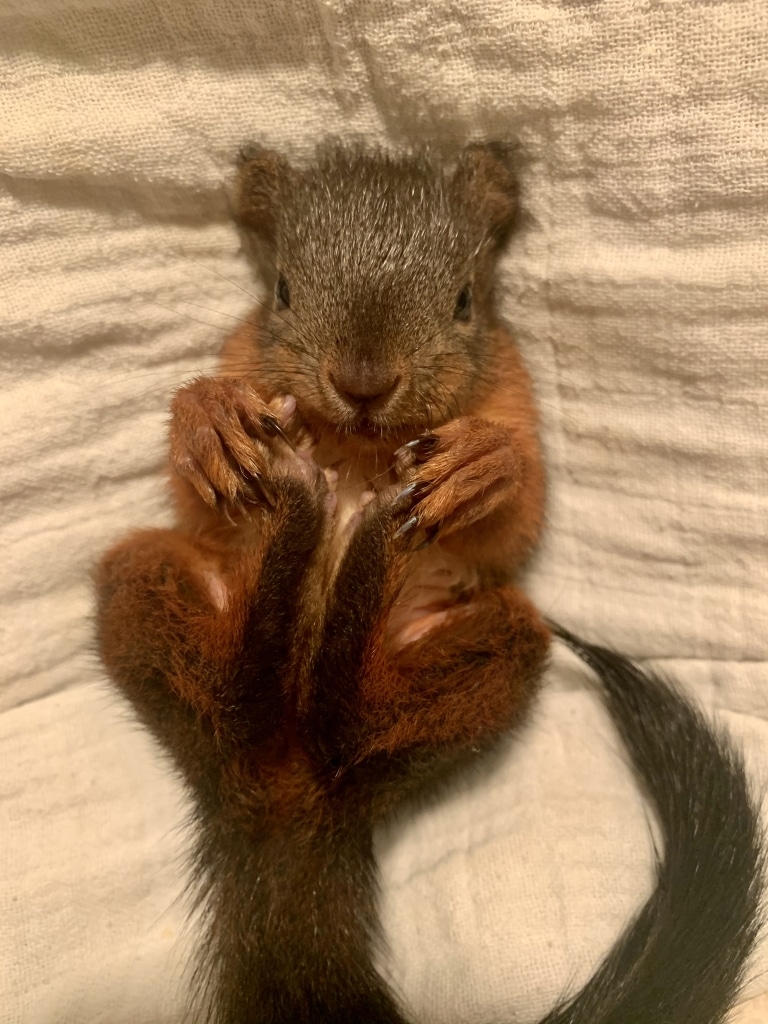
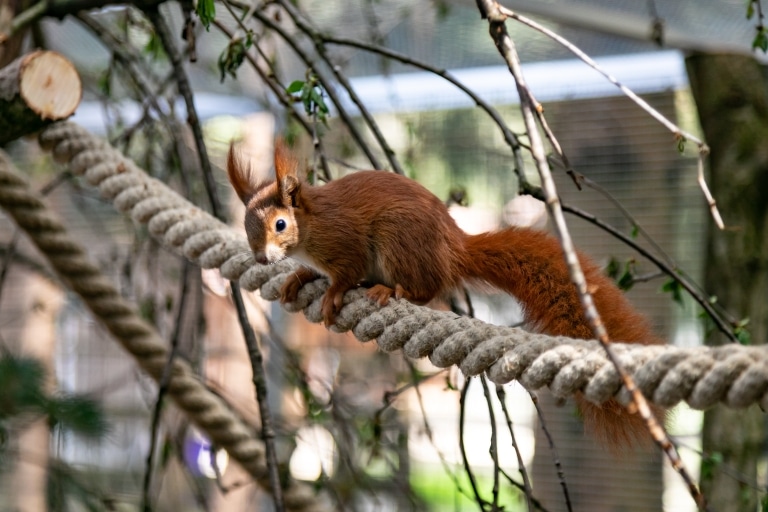
Foxes
Foxes are not an endangered species per se. However, their natural habitat is. The natural environment of these nocturnal animals are forests and fields. Due to intensive agricultural use and the clearing of forests, more and more foxes have found their way into human settlements.
The biggest enemy of animals in urban habitats is traffic. Foxes are often run over by cars. Gut Aiderbichl is home to many foxes that came to us as babies. We can only guess what happened to their parents. After birth, little foxes are completely helpless and dependent on the care of their mother. Our foundlings are lovingly bottle-fed and nursed back to health by our staff. Some of the native red foxes that live at Gut Aiderbichl were also found as adult foxes, severely injured, and received medical care on site.
The foxes at Gut Aiderbichl can no longer be released into the wild. They have become too accustomed to humans. They have forgotten or never learnt how to hunt naturally. The danger of falling victim to a hunter is also too great for animals that are used to humans. They have therefore found a “forever home” at Gut Aiderbichl.
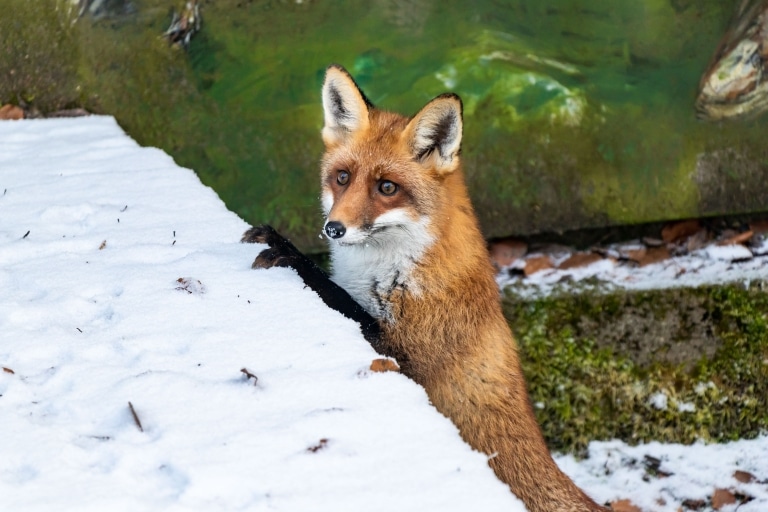
Wild boars
Humans are expanding their habitat more and more. By clearing land, draining marshland and adapting it for agriculture, we are depriving pigs of their natural habitat. These areas inevitably lead to conflicts with the bristly animals. In their search for food, wild boars repeatedly cause damage to fields and cultivated landscapes and are therefore not a welcome guest. For this reason, they are often still hunted today.
Many of the animals at Gut Aiderbichl were found and cared for by humans when they were still young. Nevertheless, wild boars, unlike their relatives the domestic pigs, are still wild animals and are not suitable as pets. If no one wants to or can take care of them, their path leads them to Gut Aiderbichl, because releasing rescued wild boars into the wild is not a good idea. They have got to know people at their best and have lost their fear of hunters as a result. That’s why we keep wild boars with us until the end of their natural lives.
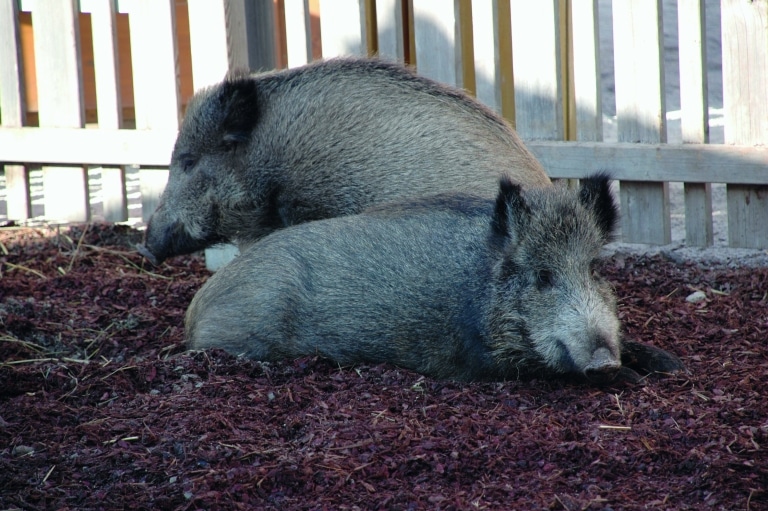
Red deer
Humans have also taken away a large part of the red deer’s natural habitat. Many forests in Europe are used for forestry. Deer are a pest for this industry, as they like to eat the buds of young trees, thereby slowing their growth. In winter, the animals also peel the bark from the trees. This allows fungi to penetrate the wood, causing it to lose its economic value. This is why red deer are often chased away from woodland areas. The increasing tarmacing and intersection of the landscape with roads is also a problem for red deer. Red deer can no longer migrate through fenced motorways, concrete embankments and other obstacles.
Several representatives of the red deer live at Gut Aiderbichl. They have come to Gut Aiderbichl for a variety of reasons, but it is not possible to release them back into the wild. They have become too accustomed to humans.
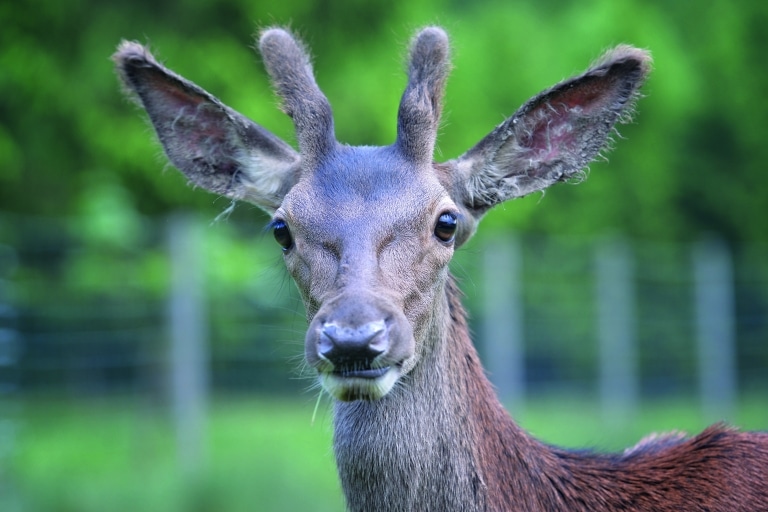
Dormouse
The increasing loss of old deciduous and mixed forests is problematic for dormice. Trees are vital for the dormouse as a place to sleep and a source of food. It feeds mainly on acorns, beech nuts and tree bark. If the mixed forests are missing, the animal also lacks food. But it is not only the clearing of forests that poses a problem for the dormouse. It is not a welcome guest for humans. It is often mistaken for a mouse and dies an agonising death in a mouse trap or is poisoned. If a wounded dormouse is found, it is often nursed back to health by Sabine Gallenberger and then released back into the wild.
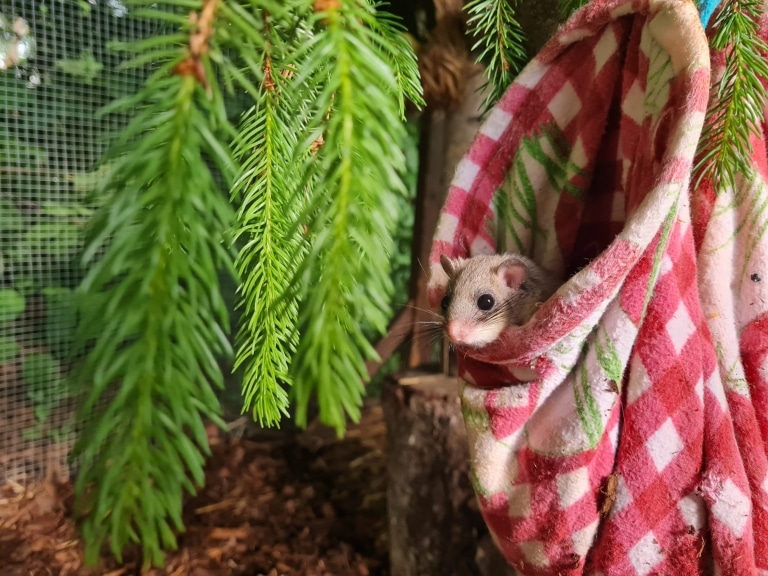
Brown hares
Increasing monocultures in agriculture pose a major problem for the brown hare. The brown hare is dependent on varied food such as wild herbs. In addition, tall grasses offer them protection from predators. In monotonous intensive farming, most field margins have disappeared. This leaves them defenceless against foxes, martens, wild boar, ravens and birds of prey, as well as cold and wet conditions.
Many young brown hares do not survive the first few weeks. They fall victim to stray cats or dogs or are literally run over by agricultural machinery. The construction of new roads and housing estates not only makes the brown hare’s habitat controversial, but also more dangerous: many hares are hit by cars.
Injured hares often come to Sabine Gallenberger. She nurses them back to health and then releases them back into the wild.
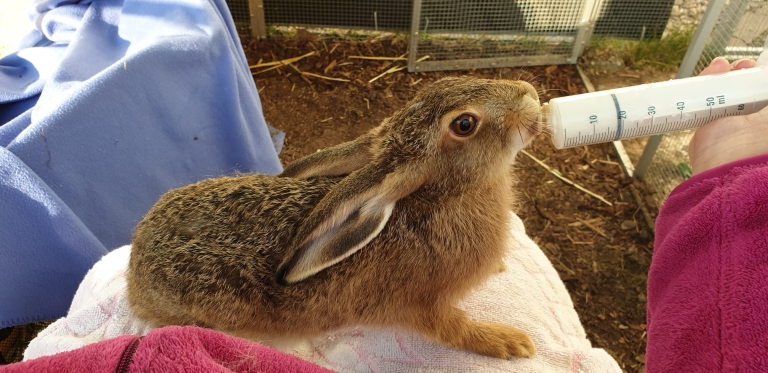
They provide first aid for wild animals
PORTRAIT CARMEN HASLINGER
Carmen Haslinger is the founder of “Eichhörnchenhilfe Salzburg” and has been looking after rodents in need of help for many years. Together with her family, she looks after up to 100 squirrels a year at her rescue centre in Großgmain. The aim is to release the animals back into the wild. To achieve this, Carmen Haslinger works closely with the reintroduction centre at Gut Aiderbichl. Some animals that are affected by paralysis or other disabilities, for example, are allowed to stay with Carmen Haslinger in the enclosures with large outdoor aviaries.
In Austria, “Eichhörnchenhilfe Salzburg” can be contacted around the clock for squirrel emergencies on the toll-free number +43 650 7274355 (www. eichhoernchenhilfesalzburg.at).
PORTRAIT SABINE GALLENBAUER
Sabine Gallenberger grew up with animal welfare and has been in close contact with Gut Aiderbichl for years. 16 years ago, Sabine got Lilly the squirrel, which a neighbour left her to raise. Other animals soon followed – in the end there were over 1,000 forest animals raised by Sabine and her parents on the outskirts of Munich. She was able to save thousands more animals by setting up a network of foster homes. Sabine was honoured with the Bavarian Animal Welfare Award for her achievements.
Sabine would like to pass on her knowledge about forest animals and offers online seminars that can be booked with her personally or via Gut Aiderbichl. Here you can find the seminar.
For squirrel emergencies in Germany, you can reach Sabine Gallenberger on +49 173 353 74 15 (www.eichhoernchen-infos.de)

